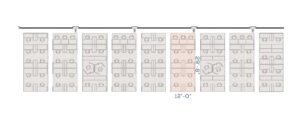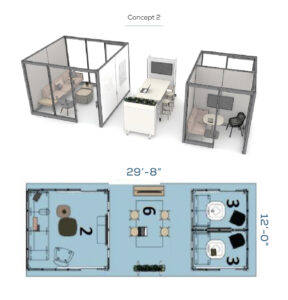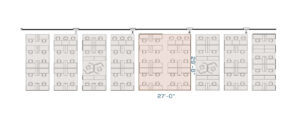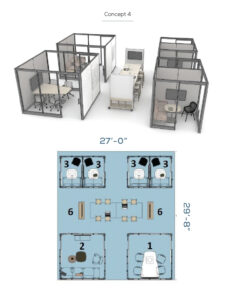Planning Modules: Designing for a Changing Landscape
March 15, 2022For many companies, workplace requirements have changed in the past two years. A “one-size-fits-all” approach to workspace planning simply doesn’t work. Companies are discovering the value of planning modules that deliver more user-choices, more variety and ability to future-proof their work environments. The purpose of modular planning is planning for change that can evolve with us and our needs to support bigger themes.
How do you ensure successful modular planning? Consider these best practices:
- Understand the new complexity of modern workplaces. The big themes are: choice, culture, wellness, collaboration, user experience and adaptability.
- Help companies prepare for a more adaptable future. By investing in the right architectural products, planning modules and furniture, companies can extend the value of their investments over a longer time.
- Pay attention to acoustics. Acoustic interference and speech privacy are paramount concerns, whatever the workplace environment. Make sure you keep them in mind.
- Know how pre-designed modules will work within your building. Consider how they interact with the building, like the existing ceiling, electrical power sources, lighting and available social/collaborative spaces.
- Help companies future-proof their spaces. By using a mix of plug-and-play planning modules, companies can reconfigure based on their current workplace needs. They can create more collaborative spaces today, and add or replace with more workstations or private office modules down the road.
- Promote the concept of “quick flips.” Working with building owners? Help them understand how planning modules can shorten the renovation timespan between tenants (less time and money lost).
Design Concept One and Two: 12’ x 30



Design Concept Three and Four: 27’ x 30



In our ongoing blog series, we explore what’s new in the world of work—and how we can help companies return to the office with a whole new set of priorities for the workplace. In this theme, we promote strategies from a recent Allsteel Learning Labs, where a panel of experts discussed best practices for designing with planning modules.
For more details and the full conversation, view the recording of the Learning Labs.